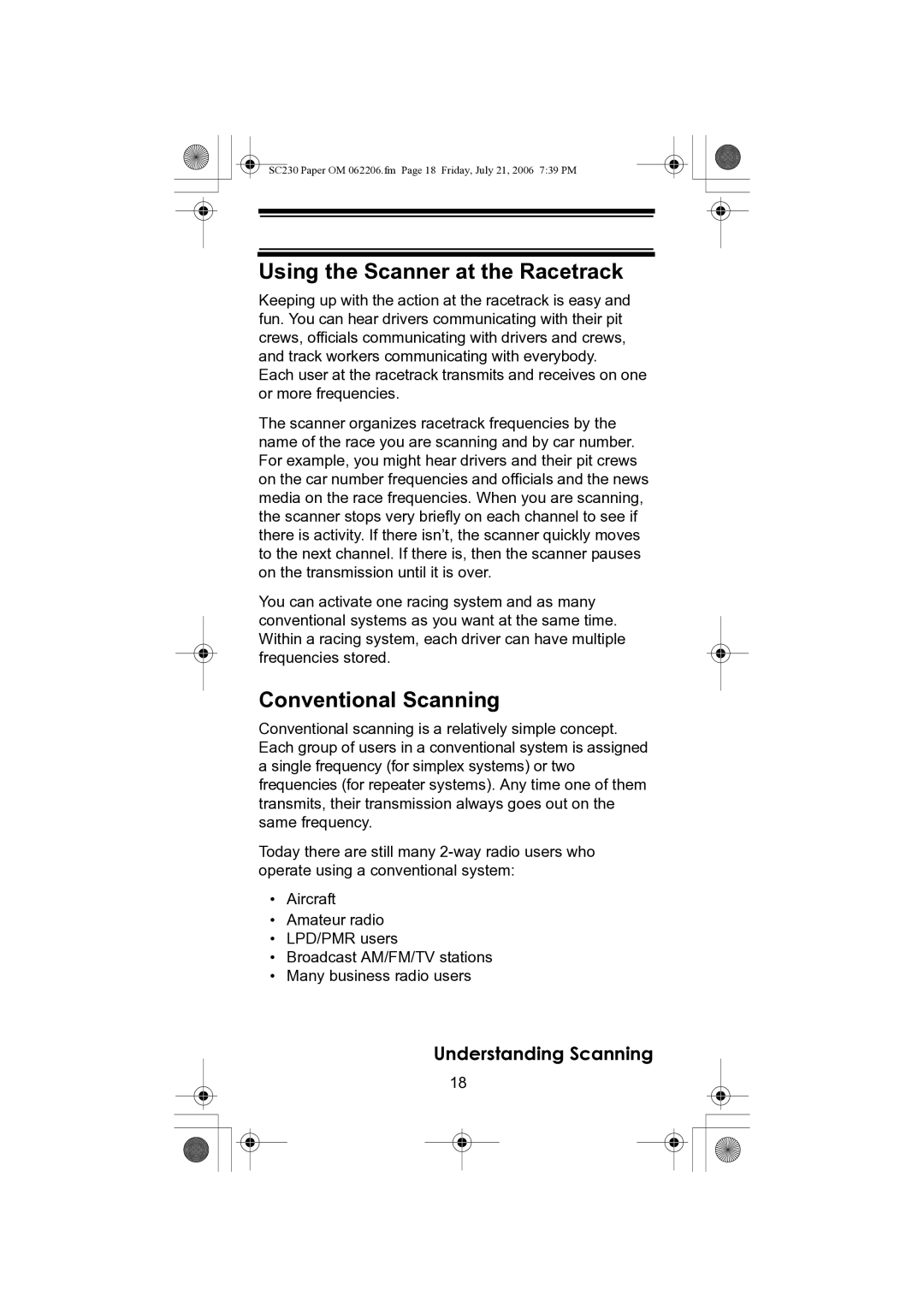
SC230 Paper OM 062206.fm Page 18 Friday, July 21, 2006 7:39 PM
Using the Scanner at the Racetrack
Keeping up with the action at the racetrack is easy and fun. You can hear drivers communicating with their pit crews, officials communicating with drivers and crews, and track workers communicating with everybody.
Each user at the racetrack transmits and receives on one or more frequencies.
The scanner organizes racetrack frequencies by the name of the race you are scanning and by car number. For example, you might hear drivers and their pit crews on the car number frequencies and officials and the news media on the race frequencies. When you are scanning, the scanner stops very briefly on each channel to see if there is activity. If there isn’t, the scanner quickly moves to the next channel. If there is, then the scanner pauses on the transmission until it is over.
You can activate one racing system and as many conventional systems as you want at the same time. Within a racing system, each driver can have multiple frequencies stored.
Conventional Scanning
Conventional scanning is a relatively simple concept. Each group of users in a conventional system is assigned a single frequency (for simplex systems) or two frequencies (for repeater systems). Any time one of them transmits, their transmission always goes out on the same frequency.
Today there are still many
•Aircraft
•Amateur radio
•LPD/PMR users
•Broadcast AM/FM/TV stations
•Many business radio users
Understanding Scanning
18
